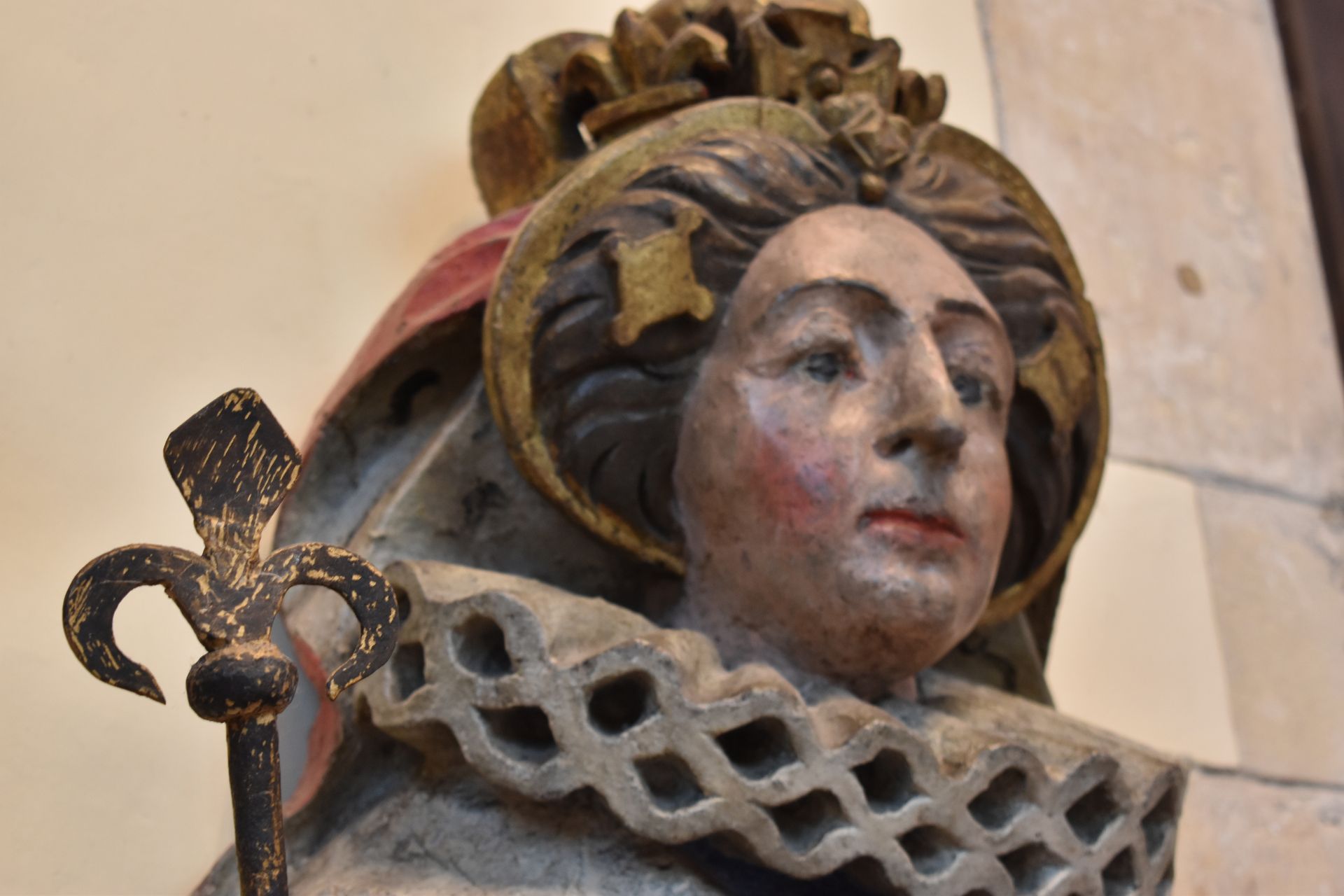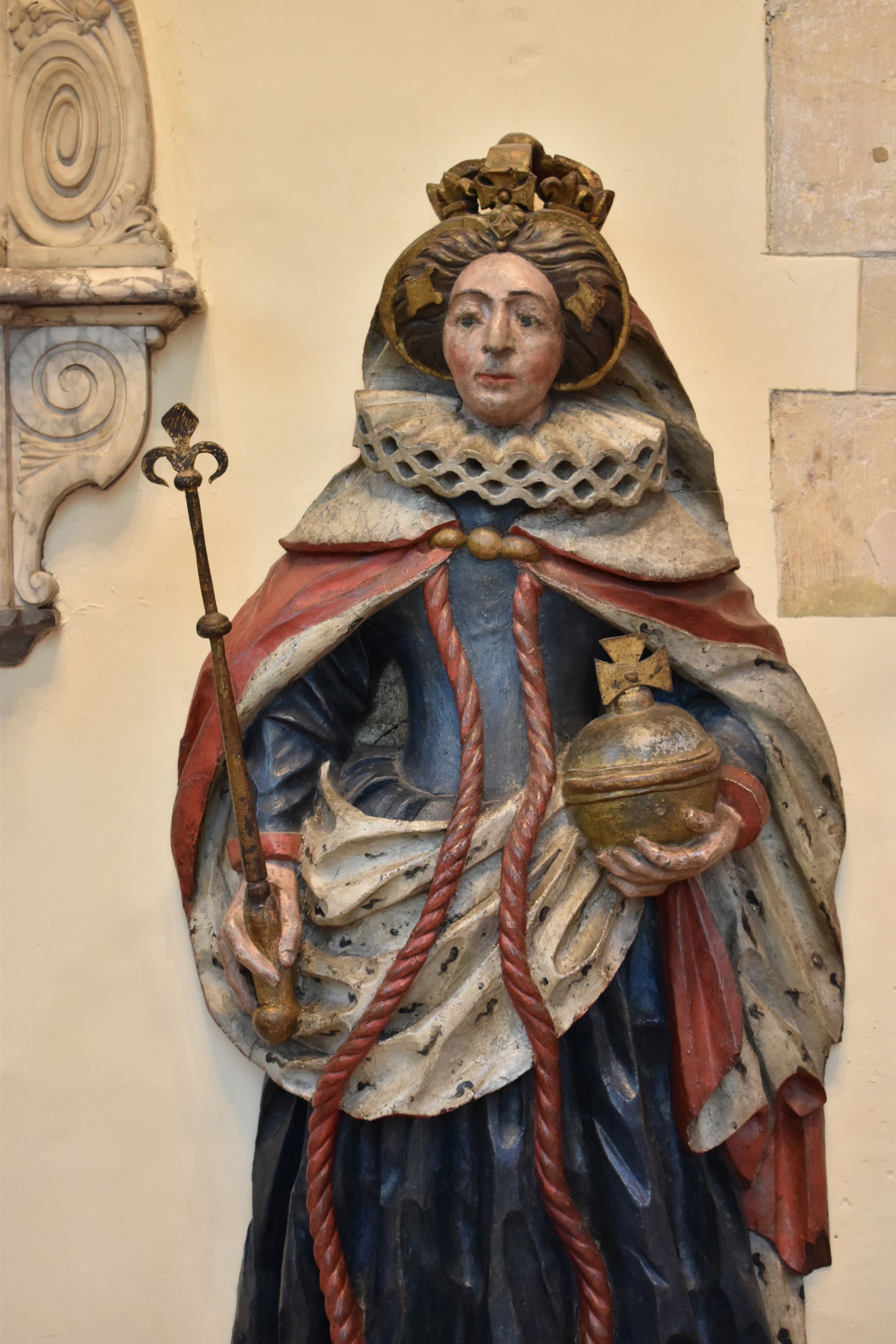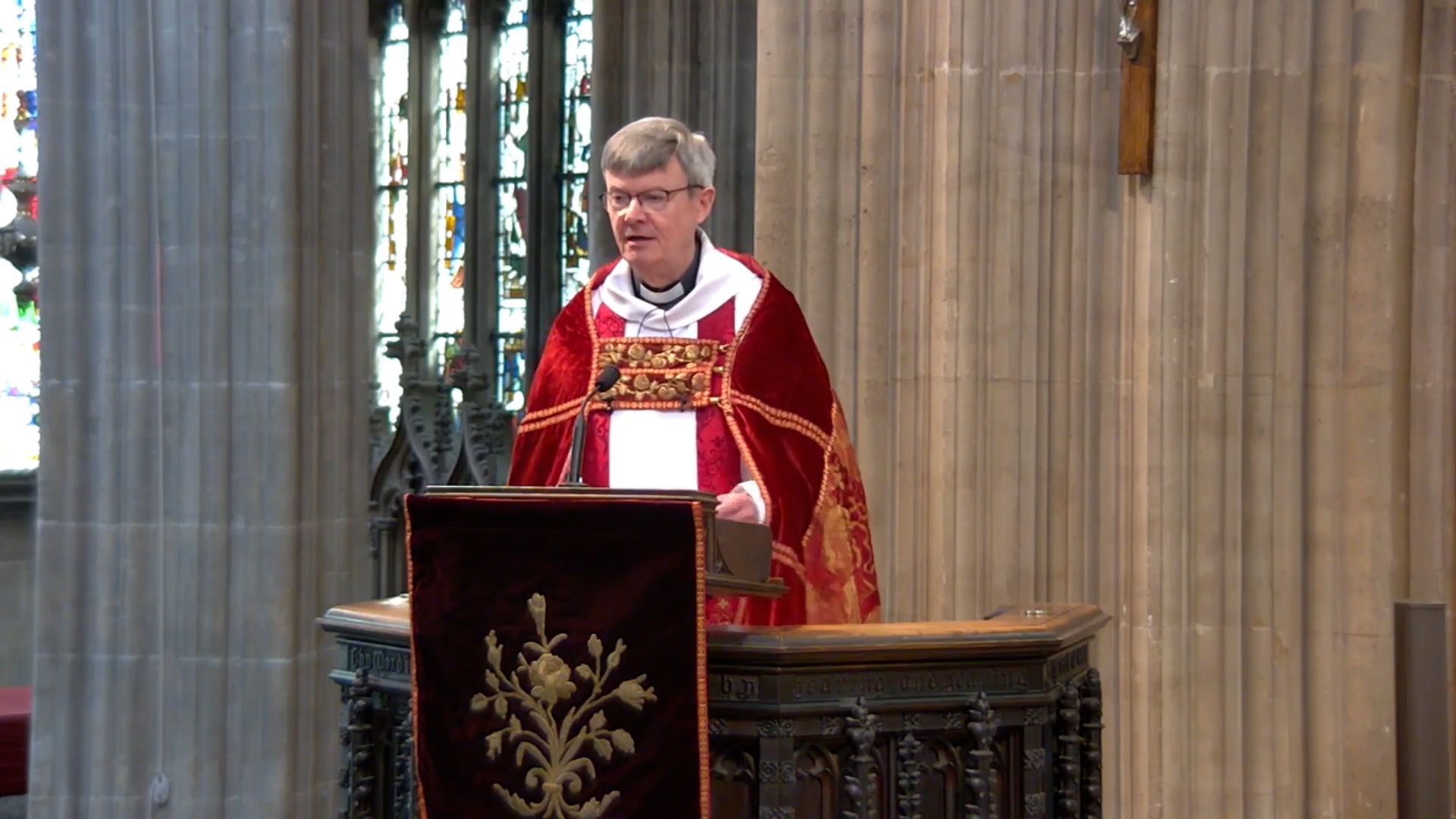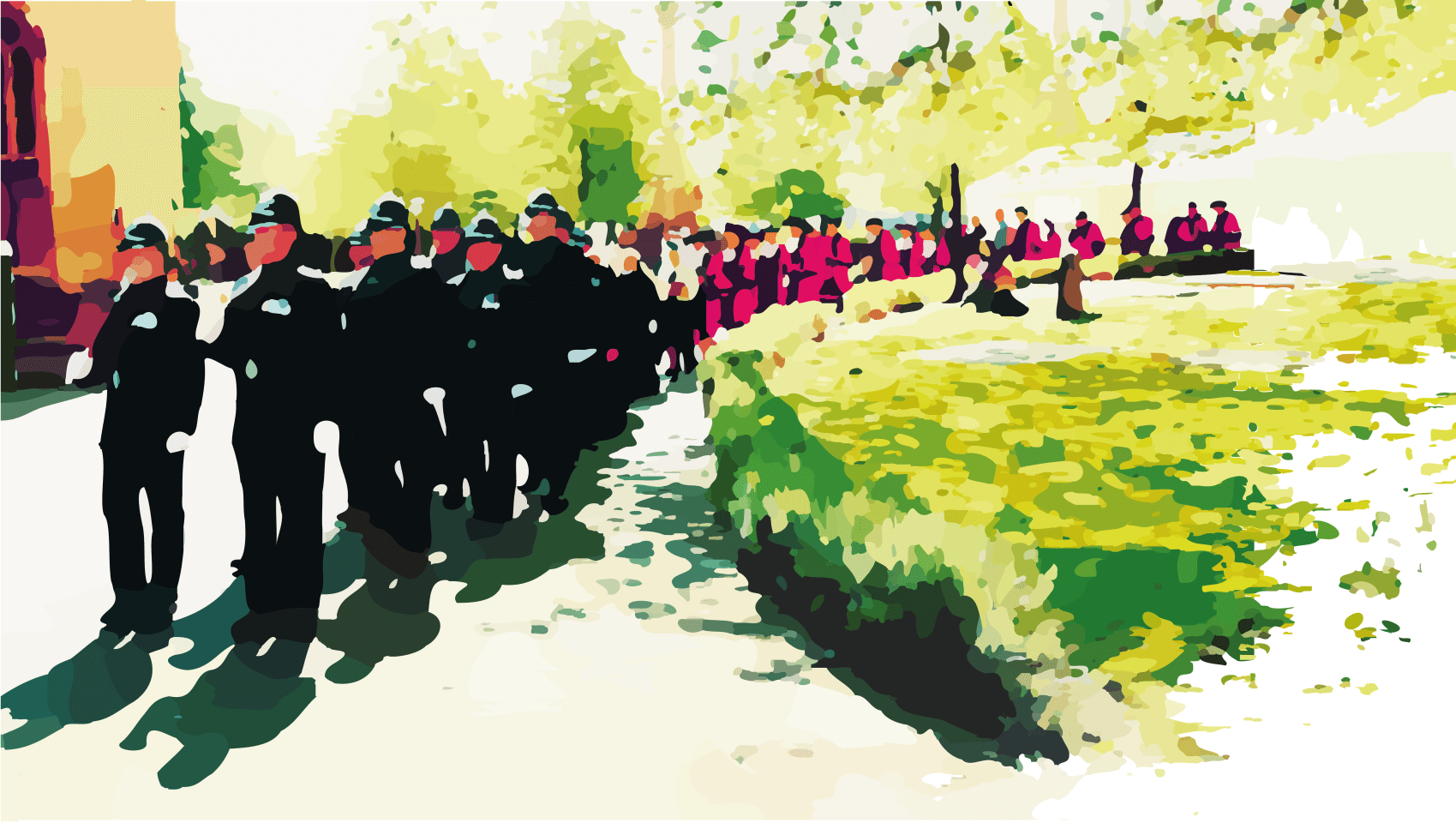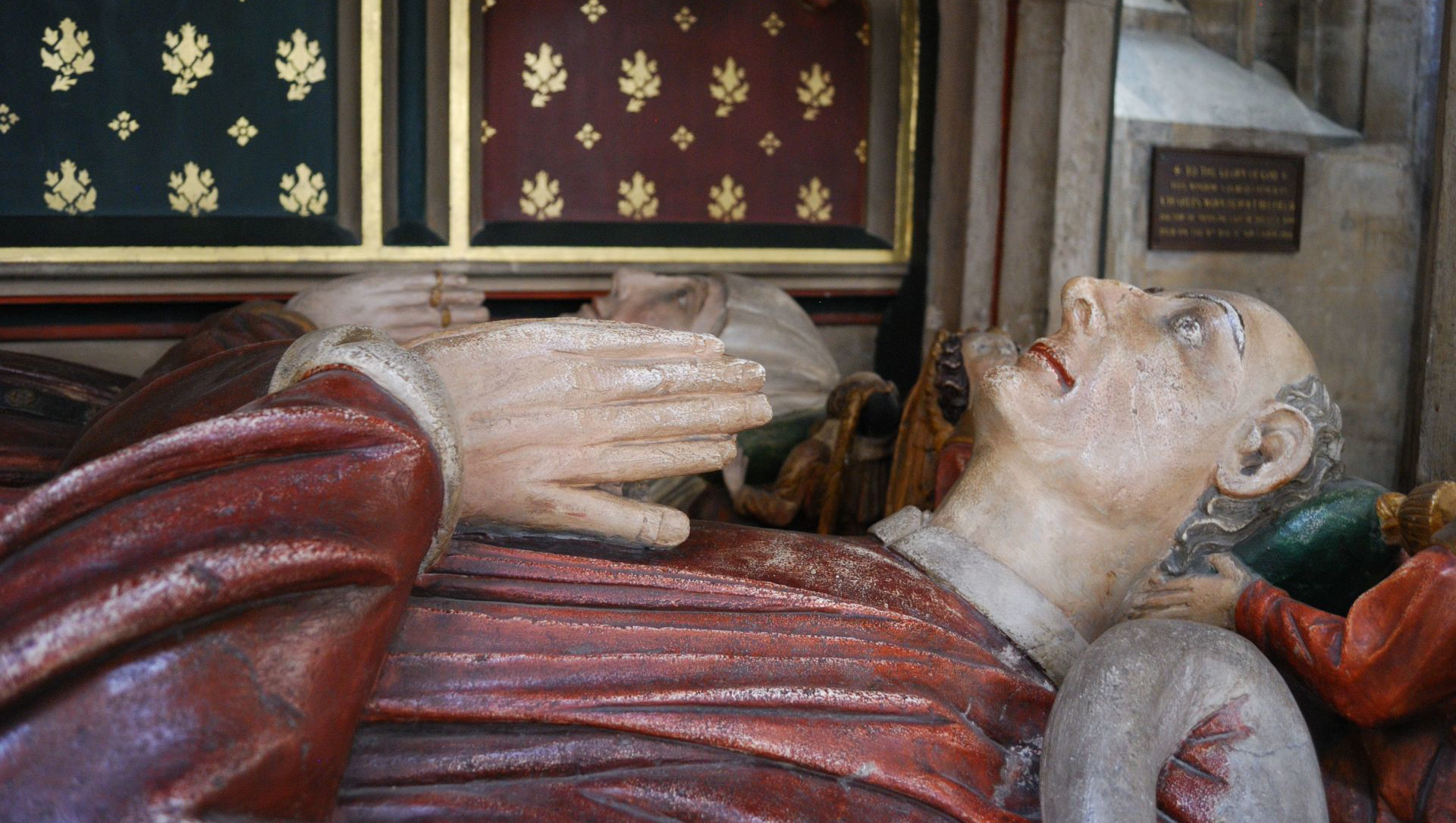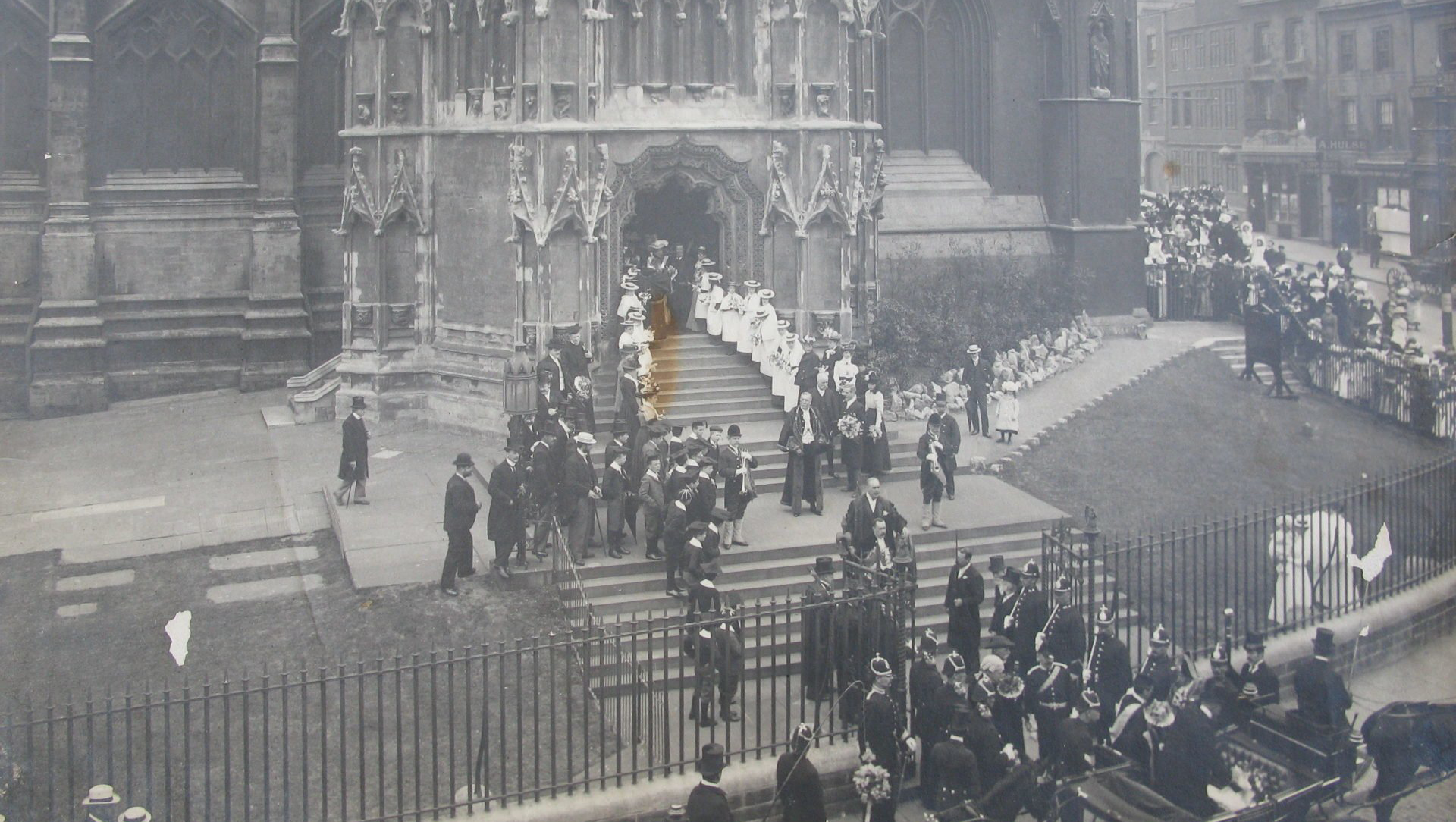St John's Chapel
Beneath the spire
St John’s Chapel is located at the base of the tower, which dates from the 1230s.
Stained glass
The chapel contains most of the church’s remaining medieval stained glass, dating from the C14th and C15th. The glass was damaged during the Reformation and civil war eras, pieced back together during the Victorian restoration of the church and refitted into the two windows here.
West window (opposite the statue of Elizabeth I)
In the west window there are nine major figure fragments: a Bishop in mass vestments; a Madonna and child (may be the figures that were recorded in 1861 in the north transept); an archbishop (headless) - may be Thomas Becket; St Lawrence with his grid iron; St Michael; St Matthias, with a phrase from the Apostle's Creed that is usually attributed to St Matthew; St John the Baptist; a woman and child, this may be St Elizabeth. The lower parts of the window show parts of a crucifix from a representation of the Trinity.
North window (opposite the iron gates)
In the north window are heads of perhaps four apostles, presumed to be from what would have been a set o; five heads of female saints; the roundels may have fitted at the tops of the tracery in windows elsewhere in the church. The designs include a monk; Thomas Becket; a beautiful virgin's head; Yorkist suns, roses and suns in glory; two kings; the symbols of the evangelists; some grotesques - a dog with a man's head and a winged deer; letters that spell out the name "MARY"
John Cabot's whalebone
John Cabot was an Italian navigator and explorer. His 1497 voyage to the coast of North America under the commission of Henry VII, King of England, is the earliest known European exploration of coastal North America since the Norse visits to Vinland in the eleventh century. The whalebone in St John's Chapel was reputedly brought back from this expedition and has been displayed on a corbel (in the form of a green man) near the chapel entrance for centuries. During the C18th and C19th the bone was reputed to have been a rib of the legendary Don Cow. In his An Historical Account of the Church of St Mary Redcliffe Bristol (1815) the Reverend John Evans spoke of the bone as being:
an animal rib, about nine feet in length. Little seems to be known of the history of this phenomenon, except the tradition of its being part of 'the Dun Cow,' whose death was one of the exploits of the famous Guy, Earl of Warwick ; and this account receives confirmation from the circumstance of a similar bone being preserved in Warwick Castle.
Statue of Queen Elizabeth I
The wall-mounted statue is said to be one of the few extant contemporary statues of Queen Elizabeth I .Elizabeth is said to have called St Mary Redcliffe “The fairest, goodliest and most famous parish church in England” during her visit to Bristol in 1574.
The famous remark suggests she was as impressed by the building as its many modern visitors are. Certainly she did the church a great favour by grants of Letters Patent in 1588 and 1591, restoring some of the funds previously confiscated during the Reformation period. These funds have remained in the custody of the St Mary Redcliffe Church Lands Charity ever since.
Prior to its move to St John's Chapel in the C19th, the statue had been associated with St Mary Redcliffe school. The school was founded as Queen Elizabeth's Free Grammar and Writing School by letters patent on 30 June 1571 when it was granted a Royal charter by Elizabeth.
The charter granted the parishioners of St Mary Redcliffe Church the Chapel of the Holy Ghost for the establishment of the school; the building had previously belonged to the Hospital of St John the Baptist, a religious foundation in Redcliffe, but had been confiscated by the Crown during the Dissolution of the Monasteries. The building was located in the Churchyard of St Mary Redcliffe, near the south porch, and was sized 56 feet by 26 feet. The charter made the provision for one master and one under-master, supervised by twelve governors and for the 'education, teaching and instruction of boys and youth in grammar and learning'. It received an endowment from John Whitson in 1627. In the 1760s the school building was torn down as it was felt it spoilt the view of the church, and with the acceptance of the Bishop of Bristol, Thomas Newton, the school moved into the Lady Chapel in the east end of the church. The school was recorded in 1839 as possessing a statue of its founder Elizabeth I and there is an earlier image of the statue displayed in the Chapel of the Holy Ghost.
Ornate Iron gates
There is a fine collection of 18th century wrought ironwork in the church - around St John's Chapel and the shop areas. The gates into St John's Chapel on the north side of the nave are by Bristol blacksmith William Edney who, along with his brother, was apprenticed to French Huguenot master ironworker Jean Tijou, who produced important work at St Paul's in London . The gates date from 1710 and were originally made to separate the chancel from the nave. The gates are amongst the finest ironwork anywhere in the West Country. Notice the arms of the City of Bristol at the top of the gates.
Links with slavery
Yeamans Sword Board
The sword board commemorates the bequest of Sir Robert Yeamans:
“1686 Sr Robert Yeamans Knight / & Baronet. Mayor of this Citty / 1669 And Borne in this Parish / 1617, gave £50 the Proffit thereof to the poor of this / Parish in Bread on every / Lords day for ever. / 1729 Rd from the estateof / Lady Yeamans £17.17.6. the / Interest to the poor for ever.”
Yeamans was Redcliffe born, as the board proudly records, the son of a brewer of the parish. Before being elected mayor in 1669, he had been master of the Merchant Venturers and sheriff of Bristol in 1662/3. He was knighted, together with three others, in 1663 when Charles II and his Queen visited Bristol, and he was created a baronet three years later, possibly after purchasing a ‘blank warrant’.
Excerpt from article 'The Sword Board returns' by Francis Greenacre, published in The Canynges Society Gazette 2017
Yeamans is known to have bought enslaved Africans from a Captain Reynolds who had captured them from a Portuguese ship:
Amongst several references to the slave trade is a statement by Robert Yeamans, one of the most prominent Bristol merchants of the time, concerning the treatment of two negroes that he had bought for £30.
Excerpt from the The Deposition Books of Bristol, Vol. II, 1650-1654 by H. E. Nott and Elizabeth Ralph (eds.)
